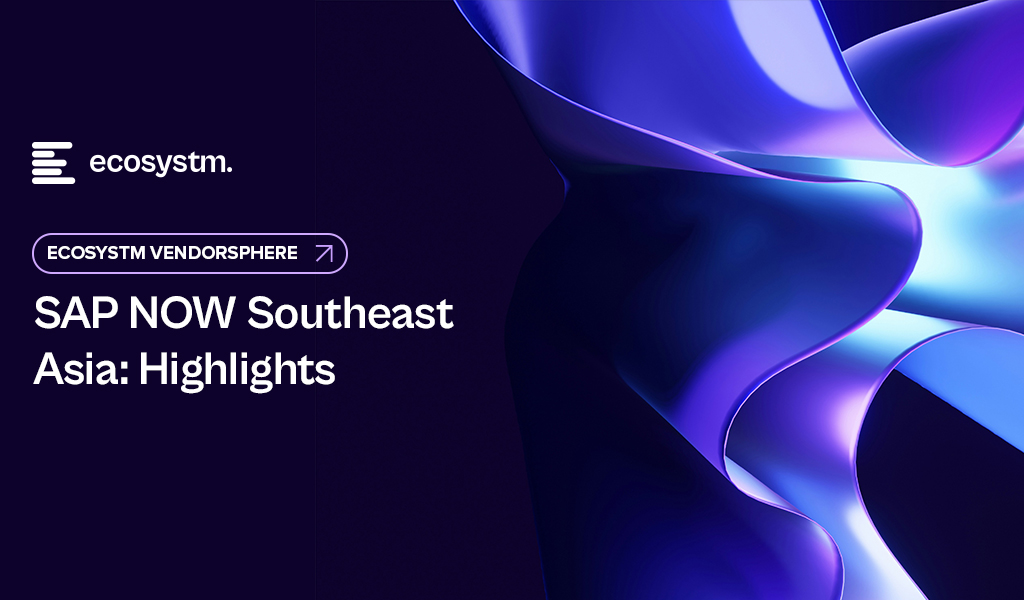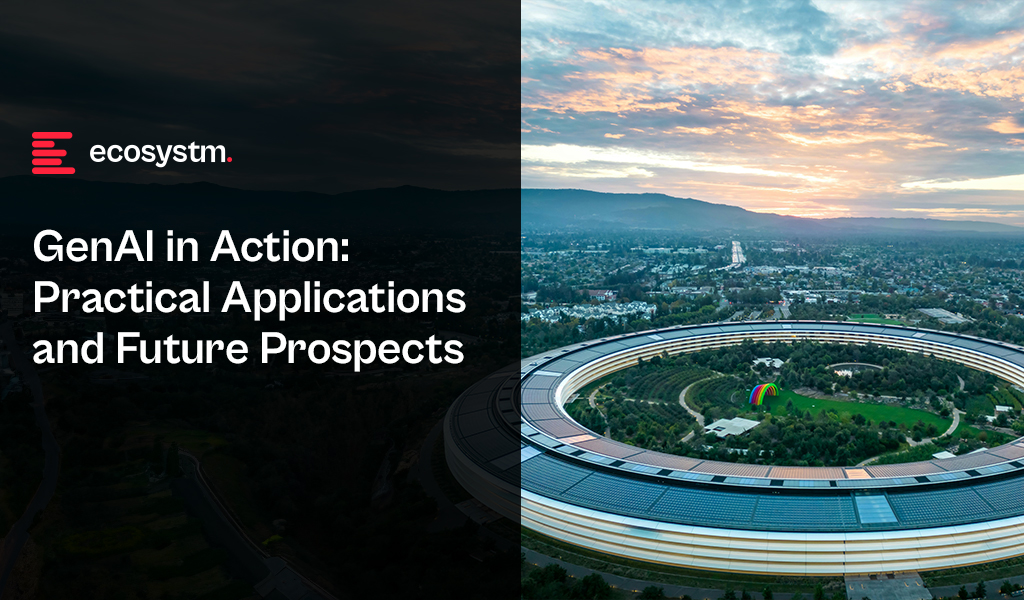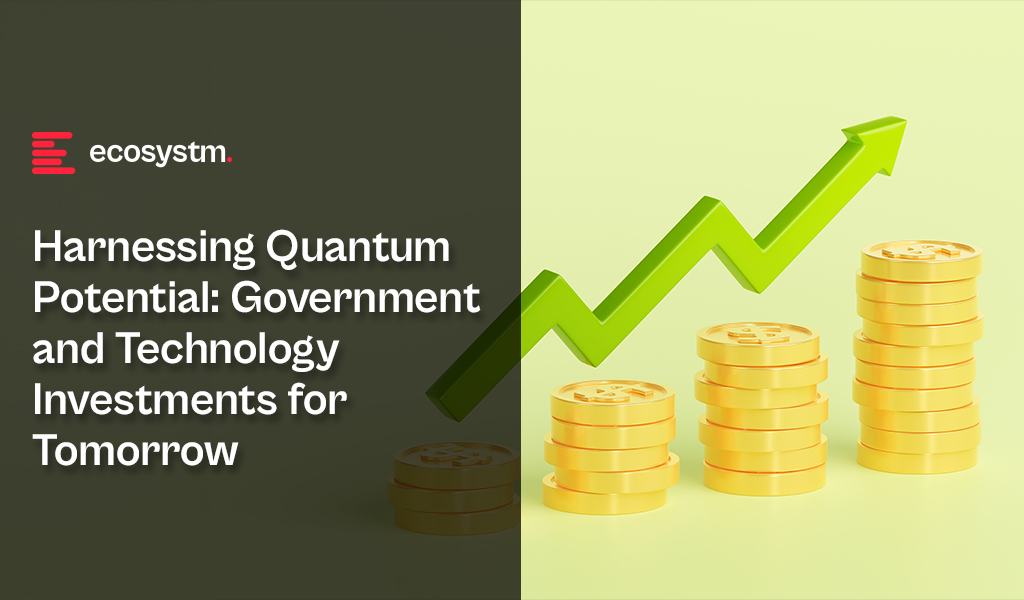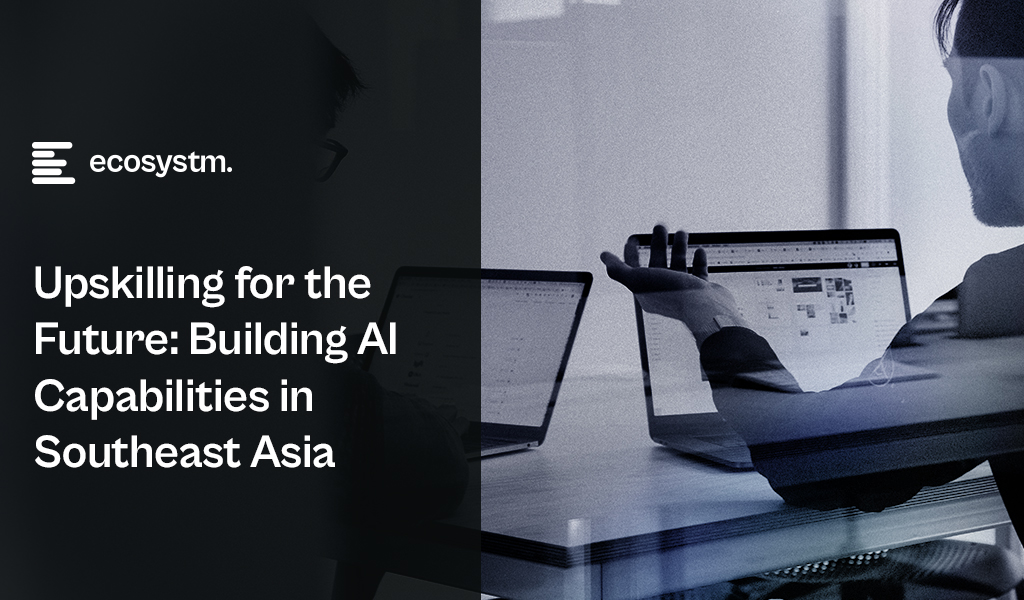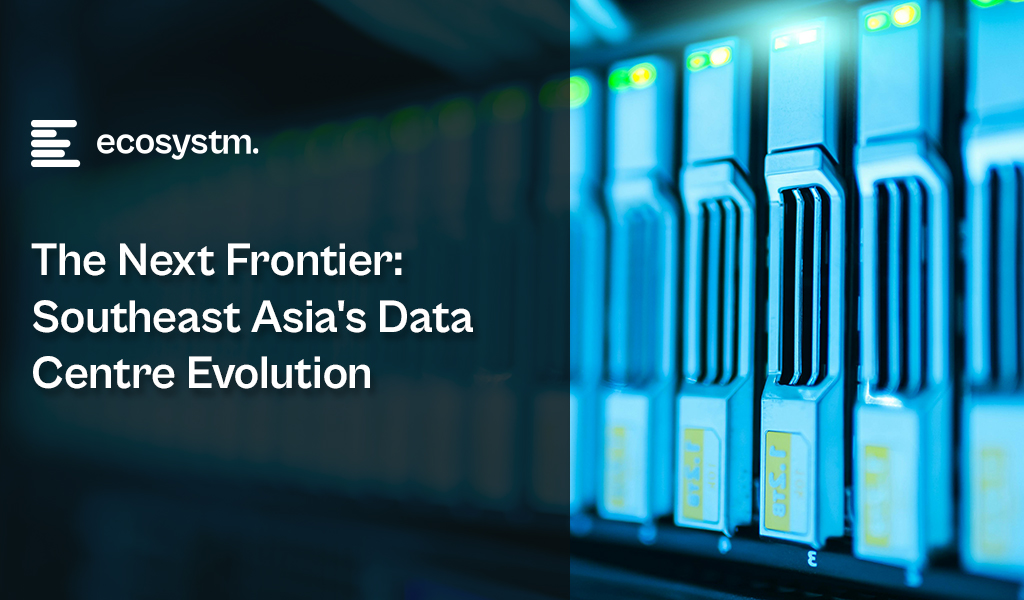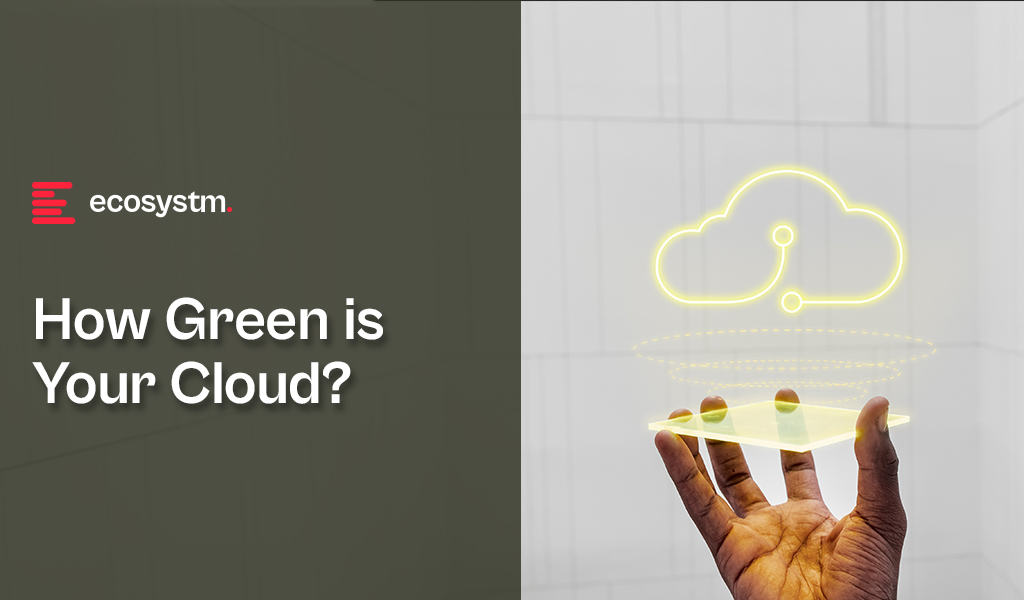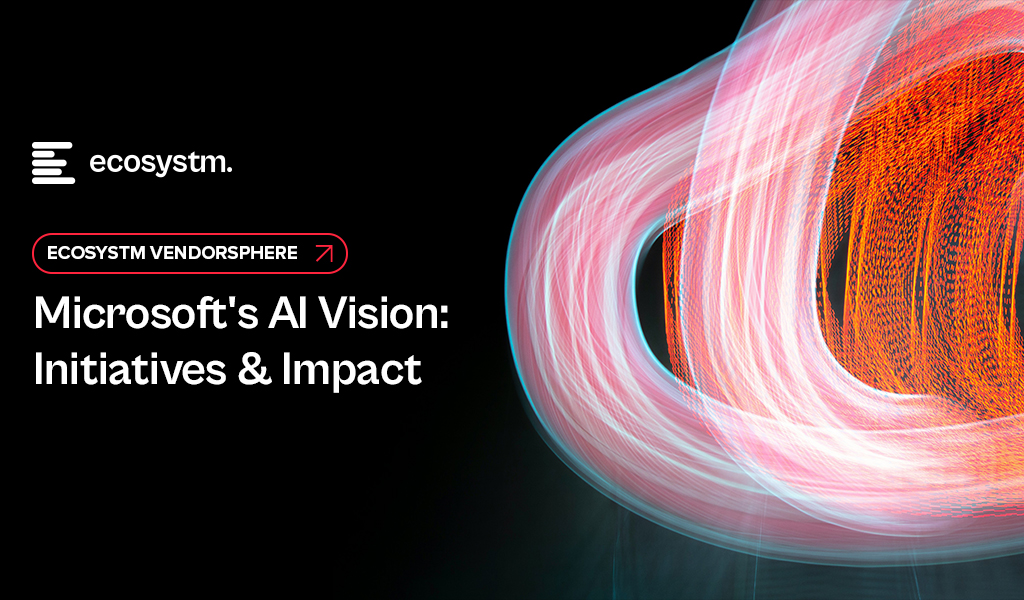The increasing alignment between IT and business functions, while crucial for organisational success, complicates the management of enterprise systems. Tech leaders must balance rapidly evolving business needs with maintaining system stability and efficiency. This dynamic adds pressure to deliver agility while ensuring long-term ERP health, making management increasingly complex.

As tech providers such as SAP enhance their capabilities and products, they will impact business processes, technology skills, and the tech landscape.
At SAP NOW Southeast Asia in Singapore, SAP presented their future roadmap, with a focus on empowering their customers to transform with agility. Ecosystm Advisors Sash Mukherjee and Tim Sheedy provide insights on SAP’s recent announcements and messaging.

Click here to download SAP NOW Southeast Asia: Highlights
What was your key takeaway from the event?
TIM SHEEDY. SAP is making a strong comeback in Asia Pacific, ramping up their RISE with SAP program after years of incremental progress. The focus is on transitioning customers from complex, highly customised legacy systems to cloud ERP, aligning with the region’s appetite for simplifying core processes, reducing customisations, and leveraging cloud benefits. Many on-prem SAP users have fallen behind on updates due to over-customisation, turning even minor upgrades into major projects – and SAP’s offerings aim to solve for these challenges.
SASH MUKHERJEE. A standout feature of the session was the compelling customer case studies. Unlike many industry events where customer stories can be generic, the stories shared were examples of SAP’s impact. From Mitr Phol’s use of SAP RISE to enhance farm-to-table transparency to CP Group’s ambitious sustainability goals aligned with the SBTi, and Standard Chartered Bank’s focus on empowering data analytics teams, these testimonials offered concrete illustrations of SAP’s value proposition.
How is SAP integrating AI into their offerings?
TIM SHEEDY. SAP, like other tech platforms, is ramping up their AI capabilities – but with a twist.
They are not only highlighting GenAI but also emphasising their predictive AI features. SAP’s approach focuses on embedded AI, integrating it directly into systems and processes to offer low-risk, user-friendly solutions.
Joule, their AI copilot, is enterprise-ready, providing seamless integration with SAP backend systems and meeting strict compliance standards like GDPR and SOC-II. By also integrating with Microsoft 365, Joule extends its reach to daily tools like Outlook, Teams, Word, and Excel.
While SAP AI may lack the flash of other platforms, it is designed for SAP users – managers and board members – who prioritise consistency, reliability, and auditability alongside business value.
What is the value proposition of SAP’s Clean Core?
SASH MUKHERJEE. SAP’s Clean Core marks a strategic shift in ERP management.
Traditionally, businesses heavily customised SAP to meet specific needs, resulting in complex and costly IT landscapes. Clean Core advocates for a standardised system with minimal customisations, offering benefits like increased agility, lower costs, and reduced risk during upgrades. However, necessary customisations can still be achieved using SAP’s BTP.
The move to the Clean Core is often driven by CEO mandates, as legacy SAP solutions have become too complex to fully leverage data. For example, an Australian mining company reduced customisations from 27,000 to 200, and Standard Chartered Bank used Clean Core data to launch a carbon program within four months.
However, the transition can be challenging and will require enhanced developer productivity, expansion of tooling, and clear migration paths.
How is SAP shifting their partner strategy?
As SAP customers face significant transformations, tech partners – cloud hyperscalers, systems integrators, consulting firms and managed services providers – will play a crucial role in executing these changes before SAP ECC loses support in 2027.
TIM SHEEDY. SAP has always relied on partners for implementations, but with fewer large-scale upgrade projects in recent years, many partner teams have shrunk. Recognising this, SAP is working to upskill partners on RISE with SAP. This effort aims to ensure they can effectively manage and optimise the modern Cloud ERP platform, utilise assets, templates, accelerators, and tools for rapid migration, and foster continuous innovation post-migration. The availability of these skills in the market will be essential for SAP customers to ensure successful transitions to the Cloud ERP platform.
SASH MUKHERJEE. SAP’s partner strategy emphasises business transformation over technology migration. This shift requires partners to focus on delivering measurable business outcomes rather than solely selling technology. Given the prevalence of partner-led sales in Southeast Asia, there is a need to empower partners with tools and resources to effectively communicate the value proposition to business decision-makers. While RISE certifications will be beneficial for larger partners, a significant portion of the market comprises SMEs that rely on smaller, local partners – and they will need support mechanisms too.
What strategies should SAP prioritise to maintain market leadership?
TIM SHEEDY. Any major platform change gives customers an opportunity to explore alternatives.
Established players like Oracle, Microsoft, and Salesforce are aggressively pursuing the ERP market. Meanwhile, industry-specific solutions, third-party support providers, and even emerging technologies like those offered by ServiceNow are challenging the traditional ERP landscape.
However, SAP has made significant strides in easing the transition from legacy platforms and is expected to continue innovating around RISE with SAP. By offering incentives and simplifying migration, SAP aims to retain their customer base. While SAP’s focus on renewal and migration could pose challenges for growth, the company’s commitment to execution suggests they will retain most of their customers. GROW with SAP is likely to be a key driver of new business, particularly in mid-sized organisations, especially if SAP can tailor offerings for the cost-sensitive markets in the region.

Exiting the North-South Highway 101 onto Mountain View, California, reveals how mundane innovation can appear in person. This Silicon Valley town, home to some of the most prominent tech giants, reveals little more than a few sprawling corporate campuses of glass and steel. As the industry evolves, its architecture naturally grows less inspiring. The most imposing structures, our modern-day coliseums, are massive energy-rich data centres, recursively training LLMs among other technologies. Yet, just as the unassuming exterior of the Googleplex conceals a maze of shiny new software, GenAI harbours immense untapped potential. And people are slowly realising that.
It has been over a year that GenAI burst onto the scene, hastening AI implementations and making AI benefits more identifiable. Today, we see successful use cases and collaborations all the time.
Finding Where Expectations Meet Reality
While the data centres of Mountain View thrum with the promise of a new era, it is crucial to have a quick reality check.
Just as the promise around dot-com startups reached a fever pitch before crashing, so too might the excitement surrounding AI be entering a period of adjustment. Every organisation appears to be looking to materialise the hype.
All eyes (including those of 15 million tourists) will be on Paris as they host the 2024 Olympics Games. The International Olympic Committee (IOC) recently introduced an AI-powered monitoring system to protect athletes from online abuse. This system demonstrates AI’s practical application, monitoring social media in real time, flagging abusive content, and ensuring athlete’s mental well-being. Online abuse is a critical issue in the 21st century. The IOC chose the right time, cause, and setting. All that is left is implementation. That’s where reality is met.
While the Googleplex doesn’t emanate the same futuristic aura as whatever is brewing within its walls, Google’s AI prowess is set to take centre stage as they partner with NBCUniversal as the official search AI partner of Team USA. By harnessing the power of their GenAI chatbot Gemini, NBCUniversal will create engaging and informative content that seamlessly integrates with their broadcasts. This will enhance viewership, making the Games more accessible and enjoyable for fans across various platforms and demographics. The move is part of NBCUniversal’s effort to modernise its coverage and attract a wider audience, including those who don’t watch live television and younger viewers who prefer online content.
From Silicon Valley to Main Street
While tech giants invest heavily in GenAI-driven product strategies, retailers and distributors must adapt to this new sales landscape.
Perhaps the promise of GenAI lies in the simple storefronts where it meets the everyday consumer. Just a short drive down the road from the Googleplex, one of many 37,000-square-foot Best Buys is preparing for a launch that could redefine how AI is sold.
In the most digitally vogue style possible, the chain retailer is rolling out Microsoft’s flagship AI-enabled PCs by training over 30,000 employees to sell and repair them and equipping over 1,000 store employees with AI skillsets. Best Buy are positioning themselves to revitalise sales, which have been declining for the past ten quarters. The company anticipates that the augmentation of AI skills across a workforce will drive future growth.

The Next Generation of User-Software Interaction
We are slowly evolving from seeking solutions to seamless integration, marking a new era of User-Centric AI.
The dynamic between humans and software has mostly been transactional: a question for an answer, or a command for execution. GenAI however, is poised to reshape this. Apple, renowned for their intuitive, user-centric ecosystem, is forging a deeper and more personalised relationship between humans and their digital tools.
Apple recently announced a collaboration with OpenAI at its WWDC, integrating ChatGPT into Siri (their digital assistant) in its new iOS 18 and macOS Sequoia rollout. According to Tim Cook, CEO, they aim to “combine generative AI with a user’s personal context to deliver truly helpful intelligence”.
Apple aims to prioritise user personalisation and control. Operating directly on the user’s device, it ensures their data remains secure while assimilating AI into their daily lives. For example, Siri now leverages “on-screen awareness” to understand both voice commands and the context of the user’s screen, enhancing its ability to assist with any task. This marks a new era of personalised GenAI, where technology understands and caters to individual needs.
We are beginning to embrace a future where LLMs assume customer-facing roles. The reality is, however, that we still live in a world where complex issues are escalated to humans.
The digital enterprise landscape is evolving. Examples such as the Salesforce Einstein Service Agent, its first fully autonomous AI agent, aim to revolutionise chatbot experiences. Built on the Einstein 1 Platform, it uses LLMs to understand context and generate conversational responses grounded in trusted business data. It offers 24/7 service, can be deployed quickly with pre-built templates, and handles simple tasks autonomously.
The technology does show promise, but it is important to acknowledge that GenAI is not yet fully equipped to handle the nuanced and complex scenarios that full customer-facing roles need. As technology progresses in the background, companies are beginning to adopt a hybrid approach, combining AI capabilities with human expertise.
AI for All: Democratising Innovation
The transformations happening inside the Googleplex, and its neighbouring giants, is undeniable. The collaborative efforts of Google, SAP, Microsoft, Apple, and Salesforce, amongst many other companies leverage GenAI in unique ways and paint a picture of a rapidly evolving tech ecosystem. It’s a landscape where AI is no longer confined to research labs or data centres, but is permeating our everyday lives, from Olympic broadcasts to customer service interactions, and even our personal devices.
The accessibility of AI is increasing, thanks to efforts like Best Buy’s employee training and Apple’s on-device AI models. Microsoft’s Copilot and Power Apps empower individuals without technical expertise to harness AI’s capabilities. Tools like Canva and Uizard empower anybody with UI/UX skills. Platforms like Coursera offer certifications in AI. It’s never been easier to self-teach and apply such important skills. While the technology continues to mature, it’s clear that the future of AI isn’t just about what the machines can do for us—it’s about what we can do with them. The on-ramp to technological discovery is no longer North-South Highway 101 or the Googleplex that lays within, but rather a network of tools and resources that’s rapidly expanding, inviting everyone to participate in the next wave of technological transformation.

Quantum computing is emerging as a groundbreaking force with the potential to reshape industries and enhance national security with unparalleled speed and precision. Governments and technology providers worldwide are heavily investing in this transformative technology, which promises significant advancements in areas such as cryptography, drug development, AI, and finance. Countries like Australia, Singapore, Taiwan, Qatar, and the UK are investing heavily in quantum research, backed by tech giants like Nvidia, IBM, and Google.
Ecosystm research finds that nearly 30% of enterprises are expecting to use quantum computing in the next 5 years.
Beyond Bits: Exploring the Potential of Quantum Computers
We need quantum computers because they have the potential to solve certain problems that are impossible (or impractical) for classical computers. Last year, Google led a study revealing that its quantum processor can complete a task in 6.18 seconds that would take a traditional supercomputer 47 years.
Here are a few reasons why quantum computing is exciting:
Unleashing the power of qubits. While classical computers use bits that can be either 0 or 1, quantum computers use qubits, which can exist in both states simultaneously (a state called superposition). This allows them to explore multiple possibilities simultaneously, making them significantly faster for specific tasks.
Tackling complex problems. Problems like simulating molecules or breaking complex encryption codes involve massive calculations. Quantum computers, with their unique properties, can manage these complexities more efficiently.
Revolutionising specific fields. Quantum computing has the potential to transform areas such as materials science, drug discovery, AI, and financial modelling. By simulating complex systems and processes, they could lead to breakthroughs in various sectors.
Quantum computers will not replace traditional computers entirely, but rather function as powerful tools for specific tasks beyond the reach of classical machines. Let’s look at cybersecurity as an example.
Twenty years ago, hacking was a basic task. Imagine a time before social media, when a simple computer and basic technical know-how were enough to breach a network. The stakes were low, the landscape uncomplicated. But technology, like threats, has evolved. Today’s hackers use sophisticated techniques, employing strategies like “harvest now, decrypt later” – stealing data today to decrypt later using more powerful machines. This is where quantum computing enters the scene, posing a significant threat to current encryption methods. In response, tech giants like Google, Apple, and Zoom are implementing quantum-resistant encryption into their software, safeguarding user data from potential future decryption attempts. Governments and telecommunication providers worldwide are boosting quantum encryption to tackle the potential security crisis.
The thrill of quantum computing lies in its infancy. Unforeseen applications, beyond our current imagination, could be unlocked as the technology matures.
Current Quantum Projects Focused on Security
First Scalable Network Secures Maritime Trade. The Netherlands is improving the resiliency of transport infrastructure in their own major international maritime hub, using quantum. The Port of Rotterdam Authority joined a collection of quantum technology firms to create a comprehensive cybersecurity ecosystem – the first of its kind globally. The port uses quantum technology to safeguard sensitive information, improving safety for the seagoing vessels carrying 470 million tonnes of cargo annually.
UK Integrates Quantum Navigation for Secure Air Travel. The UK is improving its digital transport infrastructure by integrating the first ever un-jammable aviation navigation system, powered by quantum software. This initiative was prompted by an incident where a government plane carrying the UK defence secretary had its GPS signal jammed close to Russian territory. This technology ensures safe and reliable navigation for aircraft, particularly in hostile environments. The UK government is investing USD 56 million into their quantum sector, aiming to become a quantum-enabled economy by 2033.
Governments Putting Faith in Quantum
Taiwan’s First Domestic 5-Qubit Computer. Taiwan is aiming to be a leader in quantum computing by building its first domestic machine by 2027. This initiative is part of a larger USD 259 million, five-year plan for quantum technology, and has a multi-pronged approach including building the actual quantum computer hardware; developing solutions to secure data in a world with quantum computers (quantum cryptography); creating a strong supply chain for quantum computing components within Taiwan; and collaborating with international partners to develop testing platforms and expertise.
Singapore Explores Real-World Applications. The Singaporean government has pledged USD 518 million to their National Quantum Strategy (NQS). This investment will provide the necessary resources to explore real-time applications of quantum technology in healthcare and technology. Simultaneously, they launched the National Quantum Processor Initiative (NQPI) to develop quantum sensors that will aid in research. Singapore aims to lead the world in quantum tech for investment portfolios, cryptography, and drug discovery.
Australia Aiming for World’s First Utility-Scale Machine. Backed by a USD 620 million investment from the Australian and Queensland governments, PsiQuantum aims to build a fault-tolerant computer that can solve previously challenging problems in fields like renewable energy, healthcare, and transportation. PsiQuantum’s innovative “fusion-based architecture” tackles scaling challenges by using millions of light-based qubits, paving the way for a new era of computational power and potentially sparking the next industrial revolution. This project positions Australia as a global leader in harnessing the immense potential of quantum computing.
Tech Companies Making the Quantum Leap
IBM Enhances Quantum Performance. IBM’s latest quantum computing platform, Qiskit 1.0, has worked on features that enhance performance, stability, and reliability. The updated open-source SDK aims to facilitate accessible quantum programming and accelerate processing times. Qiskit 1.0 uses optimised circuits to create and manage the interplay between classical and quantum computing. IBM is even collaborating with Japan’s AIST to develop a 10,000-qubit quantum computer by 2029, which is 75 times more powerful than current systems.
Microsoft and Quantinuum Achieve Reliable Logical Qubits. This significant milestone is said to mark a new era of dependable quantum technology, dramatically reducing errors and enhancing the precision of quantum computations. They have demonstrated an 800x improvement in error rates, paving the way for hybrid supercomputing systems that combine AI, high-performance computing (HPCs), and quantum capabilities to tackle scientific problems, with new capabilities becoming available to Azure Quantum Elements customers in the coming months.
Quantum Cloud Services for Enterprise. Major tech players QMware, Nvidia, and Oracle are teaming up to create hybrid quantum computing service for businesses. Combining classical and quantum computing, the project aims to crunch complex problems in AI, machine learning, and optimisation – all in the cloud.
Building Towards a Quantum Future
In the short term, using HPCs with quantum algorithms can already provide noticeable speed improvements over traditional methods. Hybrid approaches, where HPCs and quantum computers work together, could lead to significant gains in speed and efficiency, potentially ranging from 10x to 100x improvement.
Three strategies: quantum-inspired, hybrid, and full-scale quantum computing each offer distinct advantages.
While quantum-inspired computing leverages quantum algorithms to run on classical systems, hybrid computing combines classical and quantum processors, optimising the strengths of both to take complex problems more efficiently. Intuitively, full-scale quantum computing represents the ultimate goal, where large, fault-tolerant quantum computers solve problems beyond the reach of current classical systems.
Looking further ahead, the development of large-scale quantum computers could revolutionise industries by solving problems far beyond the reach of classical computers, with potential speedups of 500x to 1000x.
As quantum technology progresses, different industries and applications will benefit from tailored approaches that best suit their unique needs.

Leaders Roundtable: Decoding the GenAI Value Chain: Best Practices for Industry Leaders
We’ve concluded another successful event! Thanks to everyone for their Valuable contributions.
->Click here to explore hightlights and key takeaways from this Roundtable session.
Southeast Asia’s massive workforce – 3rd largest globally – faces a critical upskilling gap, especially with the rise of AI. While AI adoption promises a USD 1 trillion GDP boost by 2030, unlocking this potential requires a future-proof workforce equipped with AI expertise.
Governments and technology providers are joining forces to build strong AI ecosystems, accelerating R&D and nurturing homegrown talent. It’s a tight race, but with focused investments, Southeast Asia can bridge the digital gap and turn its AI aspirations into reality.
Read on to find out how countries like Singapore, Thailand, Vietnam, and The Philippines are implementing comprehensive strategies to build AI literacy and expertise among their populations.
Download ‘Upskilling for the Future: Building AI Capabilities in Southeast Asia’ as a PDF
Big Tech Invests in AI Workforce
Southeast Asia’s tech scene heats up as Big Tech giants scramble for dominance in emerging tech adoption.
Microsoft is partnering with governments, nonprofits, and corporations across Indonesia, Malaysia, the Philippines, Thailand, and Vietnam to equip 2.5M people with AI skills by 2025. Additionally, the organisation will also train 100,000 Filipino women in AI and cybersecurity.
Singapore sets ambitious goal to triple its AI workforce by 2028. To achieve this, AWS will train 5,000 individuals annually in AI skills over the next three years.
NVIDIA has partnered with FPT Software to build an AI factory, while also championing AI education through Vietnamese schools and universities. In Malaysia, they have launched an AI sandbox to nurture 100 AI companies targeting USD 209M by 2030.
Singapore Aims to be a Global AI Hub
Singapore is doubling down on upskilling, global leadership, and building an AI-ready nation.
Singapore has launched its second National AI Strategy (NAIS 2.0) to solidify its global AI leadership. The aim is to triple the AI talent pool to 15,000, establish AI Centres of Excellence, and accelerate public sector AI adoption. The strategy focuses on developing AI “peaks of excellence” and empowering people and businesses to use AI confidently.
In keeping with this vision, the country’s 2024 budget is set to train workers who are over 40 on in-demand skills to prepare the workforce for AI. The country will also invest USD 27M to build AI expertise, by offering 100 AI scholarships for students and attracting experts from all over the globe to collaborate with the country.
Thailand Aims for AI Independence
Thailand’s ‘Ignite Thailand’ 2030 vision focuses on boosting innovation, R&D, and the tech workforce.
Thailand is launching the second phase of its National AI Strategy, with a USD 42M budget to develop an AI workforce and create a Thai Large Language Model (ThaiLLM). The plan aims to train 30,000 workers in sectors like tourism and finance, reducing reliance on foreign AI.
The Thai government is partnering with Microsoft to build a new data centre in Thailand, offering AI training for over 100,000 individuals and supporting the growing developer community.
Building a Digital Vietnam
Vietnam focuses on AI education, policy, and empowering women in tech.
Vietnam’s National Digital Transformation Programme aims to create a digital society by 2030, focusing on integrating AI into education and workforce training. It supports AI research through universities and looks to address challenges like addressing skill gaps, building digital infrastructure, and establishing comprehensive policies.
The Vietnamese government and UNDP launched Empower Her Tech, a digital skills initiative for female entrepreneurs, offering 10 online sessions on GenAI and no-code website creation tools.
The Philippines Gears Up for AI
The country focuses on investment, public-private partnerships, and building a tech-ready workforce.
With its strong STEM education and programming skills, the Philippines is well-positioned for an AI-driven market, allocating USD 30M for AI research and development.
The Philippine government is partnering with entities like IBPAP, Google, AWS, and Microsoft to train thousands in AI skills by 2025, offering both training and hands-on experience with cutting-edge technologies.
The strategy also funds AI research projects and partners with universities to expand AI education. Companies like KMC Teams will help establish and manage offshore AI teams, providing infrastructure and support.

ASEAN, poised to become the world’s 4th largest economy by 2030, is experiencing a digital boom. With an estimated 125,000 new internet users joining daily, it is the fastest-growing digital market globally. These users are not just browsing, but are actively engaged in data-intensive activities like gaming, eCommerce, and mobile business. As a result, monthly data usage is projected to soar from 9.2 GB per user in 2020 to 28.9 GB per user by 2025, according to the World Economic Forum. Businesses and governments are further fuelling this transformation by embracing Cloud, AI, and digitisation.
Investments in data centre capacity across Southeast Asia are estimated to grow at a staggering pace to meet this growing demand for data. While large hyperscale facilities are currently handling much of the data needs, edge computing – a distributed model placing data centres closer to users – is fast becoming crucial in supporting tomorrow’s low-latency applications and services.
The Big & the Small: The Evolving Data Centre Landscape
As technology pushes boundaries with applications like augmented reality, telesurgery, and autonomous vehicles, the demand for ultra-low latency response times is skyrocketing. Consider driverless cars, which generate a staggering 5 TB of data per hour and rely heavily on real-time processing for split-second decisions. This is where edge data centres come in. Unlike hyperscale data centres, edge data centres are strategically positioned closer to users and devices, minimising data travel distances and enabling near-instantaneous responses; and are typically smaller with a capacity ranging from 500 KW to 2 MW. In comparison, large data centres have a capacity of more than 80MW.
While edge data centres are gaining traction, cloud-based hyperscalers such as AWS, Microsoft Azure, and Google Cloud remain a dominant force in the Southeast Asian data centre landscape. These facilities require substantial capital investment – for instance, it took almost USD 1 billion to build Meta’s 150 MW hyperscale facility in Singapore – but offer immense processing power and scalability. While hyperscalers have the resources to build their own data centres in edge locations or emerging markets, they often opt for colocation facilities to familiarise themselves with local markets, build out operations, and take a “wait and see” approach before committing significant investments in the new market.
The growth of data centres in Southeast Asia – whether edge, cloud, hyperscale, or colocation – can be attributed to a range of factors. The region’s rapidly expanding digital economy and increasing internet penetration are the prime reasons behind the demand for data storage and processing capabilities. Additionally, stringent data sovereignty regulations in many Southeast Asian countries require the presence of local data centres to ensure compliance with data protection laws. Indonesia’s Personal Data Protection Law, for instance, allows personal data to be transferred outside of the country only where certain stringent security measures are fulfilled. Finally, the rising adoption of cloud services is also fuelling the need for onshore data centres to support cloud infrastructure and services.
Notable Regional Data Centre Hubs
Singapore. Singapore imposed a moratorium on new data centre developments between 2019 to 2022 due to concerns over energy consumption and sustainability. However, the city-state has recently relaxed this ban and announced a pilot scheme allowing companies to bid for permission to develop new facilities.
In 2023, the Singapore Economic Development Board (EDB) and the Infocomm Media Development Authority (IMDA) provisionally awarded around 80 MW of new capacity to four data centre operators: Equinix, GDS, Microsoft, and a consortium of AirTrunk and ByteDance (TikTok’s parent company). Singapore boasts a formidable digital infrastructure with 100 data centres, 1,195 cloud service providers, and 22 network fabrics. Its robust network, supported by 24 submarine cables, has made it a global cloud connectivity leader, hosting major players like AWS, Azure, IBM Softlayer, and Google Cloud.
Aware of the high energy consumption of data centres, Singapore has taken a proactive stance towards green data centre practices. A collaborative effort between the IMDA, government agencies, and industries led to the development of a “Green Data Centre Standard“. This framework guides organisations in improving data centre energy efficiency, leveraging the established ISO 50001 standard with customisations for Singapore’s context. The standard defines key performance metrics for tracking progress and includes best practices for design and operation. By prioritising green data centres, Singapore strives to reconcile its digital ambitions with environmental responsibility, solidifying its position as a leading Asian data centre hub.
Malaysia. Initiatives like MyGovCloud and the Digital Economy Blueprint are driving Malaysia’s public sector towards cloud-based solutions, aiming for 80% use of cloud storage. Tenaga Nasional Berhad also established a “green lane” for data centres, solidifying Malaysia’s commitment to environmentally responsible solutions and streamlined operations. Some of the big companies already operating include NTT Data Centers, Bridge Data Centers and Equinix.
The district of Kulai in Johor has emerged as a hotspot for data centre activity, attracting major players like Nvidia and AirTrunk. Conditional approvals have been granted to industry giants like AWS, Microsoft, Google, and Telekom Malaysia to build hyperscale data centres, aimed at making the country a leading hub for cloud services in the region. AWS also announced a new AWS Region in the country that will meet the high demand for cloud services in Malaysia.
Indonesia. With over 200 million internet users, Indonesia boasts one of the world’s largest online populations. This expanding internet economy is leading to a spike in the demand for data centre services. The Indonesian government has also implemented policies, including tax incentives and a national data centre roadmap, to stimulate growth in this sector.
Microsoft, for instance, is set to open its first regional data centre in Thailand and has also announced plans to invest USD 1.7 billion in cloud and AI infrastructure in Indonesia. The government also plans to operate 40 MW of national data centres across West Java, Batam, East Kalimantan, and East Nusa Tenggara by 2026.
Thailand. Remote work and increasing online services have led to a data centre boom, with major industry players racing to meet Thailand’s soaring data demands.
In 2021, Singapore’s ST Telemedia Global Data Centres launched its first 20 MW hyperscale facility in Bangkok. Soon after, AWS announced a USD 5 billion investment plan to bolster its cloud capacity in Thailand and the region over the next 15 years. Heavyweights like TCC Technology Group, CAT Telecom, and True Internet Data Centre are also fortifying their data centre footprints to capitalise on this explosive growth. Microsoft is also set to open its first regional data centre in the country.
Conclusion
Southeast Asia’s booming data centre market presents a goldmine of opportunity for tech investment and innovation. However, navigating this lucrative landscape requires careful consideration of legal hurdles. Data protection regulations, cross-border data transfer restrictions, and local policies all pose challenges for investors. Beyond legal complexities, infrastructure development needs and investment considerations must also be addressed. Despite these challenges, the potential rewards for companies that can navigate them are substantial.

GenAI has taken the world by storm, with organisations big and small eager to pilot use cases for automation and productivity boosts. Tech giants like Google, AWS, and Microsoft are offering cloud-based GenAI tools, but the demand is straining current infrastructure capabilities needed for training and deploying large language models (LLMs) like ChatGPT and Bard.
Understanding the Demand for Chips
The microchip manufacturing process is intricate, involving hundreds of steps and spanning up to four months from design to mass production. The significant expense and lengthy manufacturing process for semiconductor plants have led to global demand surpassing supply. This imbalance affects technology companies, automakers, and other chip users, causing production slowdowns.
Supply chain disruptions, raw material shortages (such as rare earth metals), and geopolitical situations have also had a fair role to play in chip shortages. For example, restrictions by the US on China’s largest chip manufacturer, SMIC, made it harder for them to sell to several organisations with American ties. This triggered a ripple effect, prompting tech vendors to start hoarding hardware, and worsening supply challenges.
As AI advances and organisations start exploring GenAI, specialised AI chips are becoming the need of the hour to meet their immense computing demands. AI chips can include graphics processing units (GPUs), application-specific integrated circuits (ASICs), and field-programmable gate arrays (FPGAs). These specialised AI accelerators can be tens or even thousands of times faster and more efficient than CPUs when it comes to AI workloads.
The surge in GenAI adoption across industries has heightened the demand for improved chip packaging, as advanced AI algorithms require more powerful and specialised hardware. Effective packaging solutions must manage heat and power consumption for optimal performance. TSMC, one of the world’s largest chipmakers, announced a shortage in advanced chip packaging capacity at the end of 2023, that is expected to persist through 2024.
The scarcity of essential hardware, limited manufacturing capacity, and AI packaging shortages have impacted tech providers. Microsoft acknowledged the AI chip crunch as a potential risk factor in their 2023 annual report, emphasising the need to expand data centre locations and server capacity to meet customer demands, particularly for AI services. The chip squeeze has highlighted the dependency of tech giants on semiconductor suppliers. To address this, companies like Amazon and Apple are investing heavily in internal chip design and production, to reduce dependence on large players such as Nvidia – the current leader in AI chip sales.
How are Chipmakers Responding?
NVIDIA, one of the largest manufacturers of GPUs, has been forced to pivot its strategy in response to this shortage. The company has shifted focus towards developing chips specifically designed to handle complex AI workloads, such as the A100 and V100 GPUs. These AI accelerators feature specialised hardware like tensor cores optimised for AI computations, high memory bandwidth, and native support for AI software frameworks.
While this move positions NVIDIA at the forefront of the AI hardware race, experts say that it comes at a significant cost. By reallocating resources towards AI-specific GPUs, the company’s ability to meet the demand for consumer-grade GPUs has been severely impacted. This strategic shift has worsened the ongoing GPU shortage, further straining the market dynamics surrounding GPU availability and demand.
Others like Intel, a stalwart in traditional CPUs, are expanding into AI, edge computing, and autonomous systems. A significant competitor to Intel in high-performance computing, AMD acquired Xilinx to offer integrated solutions combining high-performance central processing units (CPUs) and programmable logic devices.
Global Resolve Key to Address Shortages
Governments worldwide are boosting chip capacity to tackle the semiconductor crisis and fortify supply chains. Initiatives like the CHIPS for America Act and the European Chips Act aim to bolster domestic semiconductor production through investments and incentives. Leading manufacturers like TSMC and Samsung are also expanding production capacities, reflecting a global consensus on self-reliance and supply chain diversification. Asian governments are similarly investing in semiconductor manufacturing to address shortages and enhance their global market presence.
Japan is providing generous government subsidies and incentives to attract major foreign chipmakers such as TSMC, Samsung, and Micron to invest and build advanced semiconductor plants in the country. Subsidies have helped to bring greenfield investments in Japan’s chip sector in recent years. TSMC alone is investing over USD 20 billion to build two cutting-edge plants in Kumamoto by 2027. The government has earmarked around USD 13 billion just in this fiscal year to support the semiconductor industry.
Moreover, Japan’s collaboration with the US and the establishment of Rapidus, a memory chip firm, backed by major corporations, further show its ambitions to revitalise its semiconductor industry. Japan is also looking into advancements in semiconductor materials like silicon carbide (SiC) and gallium nitride (GaN) – crucial for powering electric vehicles, renewable energy systems, and 5G technology.
South Korea. While Taiwan holds the lead in semiconductor manufacturing volume, South Korea dominates the memory chip sector, largely due to Samsung. The country is also spending USD 470 billion over the next 23 years to build the world’s largest semiconductor “mega cluster” covering 21,000 hectares in Gyeonggi Province near Seoul. The ambitious project, a partnership with Samsung and SK Hynix, will centralise and boost self-sufficiency in chip materials and components to 50% by 2030. The mega cluster is South Korea’s bold plan to cement its position as a global semiconductor leader and reduce dependence on the US amidst growing geopolitical tensions.
Vietnam. Vietnam is actively positioning itself to become a major player in the global semiconductor supply chain amid the push to diversify away from China. The Southeast Asian nation is offering tax incentives, investing in training tens of thousands of semiconductor engineers, and encouraging major chip firms like Samsung, Nvidia, and Amkor to set up production facilities and design centres. However, Vietnam faces challenges such as a limited pool of skilled labour, outdated energy infrastructure leading to power shortages in key manufacturing hubs, and competition from other regional players like Taiwan and Singapore that are also vying for semiconductor investments.
The Potential of SLMs in Addressing Infrastructure Challenges
Small language models (SLMs) offer reduced computational requirements compared to larger models, potentially alleviating strain on semiconductor supply chains by deploying on smaller, specialised hardware.
Innovative SLMs like Google’s Gemini Nano and Mistral AI’s Mixtral 8x7B enhance efficiency, running on modest hardware, unlike their larger counterparts. Gemini Nano is integrated into Bard and available on Pixel 8 smartphones, while Mixtral 8x7B supports multiple languages and suits tasks like classification and customer support.
The shift towards smaller AI models can be pivotal to the AI landscape, democratising AI and ensuring accessibility and sustainability. While they may not be able to handle complex tasks as well as LLMs yet, the ability of SLMs to balance model size, compute power, and ethical considerations will shape the future of AI development.

For many organisations migrating to cloud, the opportunity to run workloads from energy-efficient cloud data centres is a significant advantage. However, carbon emissions can vary from one country to another and if left unmonitored, will gradually increase over time as cloud use grows. This issue will become increasingly important as we move into the era of compute-intensive AI and the burden of cloud on natural resources will shift further into the spotlight.
The International Energy Agency (IEA) estimates that data centres are responsible for up to 1.5% of global electricity use and 1% of GHG emissions. Cloud providers have recognised this and are committed to change. Between 2025 and 2030, all hyperscalers – AWS, Azure, Google, and Oracle included – expect to power their global cloud operations entirely with renewable sources.
Chasing the Sun
Cloud providers are shifting their sights from simply matching electricity use with renewable power purchase agreements (PPA) to the more ambitious goal of operating 24/7 on carbon-free sources. A defining characteristic of renewables though is intermittency, with production levels fluctuating based on the availability of sunlight and wind. Leading cloud providers are using AI to dynamically distribute compute workloads throughout the day to regions with lower carbon intensity. Workloads that are processed with solar power during daylight can be shifted to nearby regions with abundant wind energy at night.
Addressing Water Scarcity
Many of the largest cloud data centres are situated in sunny locations to take advantage of solar power and proximity to population centres. Unfortunately, this often means that they are also in areas where water is scarce. While liquid-cooled facilities are energy efficient, local communities are concerned on the strain on water sources. Data centre operators are now committing to reduce consumption and restore water supplies. Simple measures, such as expanding humidity (below 20% RH) and temperature tolerances (above 30°C) in server rooms have helped companies like Meta to cut wastage. Similarly, Google has increased their reliance on non-potable sources, such as grey water and sea water.
From Waste to Worth
Data centre operators have identified innovative ways to reuse the excess heat generated by their computing equipment. Some have used it to heat adjacent swimming pools while others have warmed rooms that house vertical farms. Although these initiatives currently have little impact on the environmental impact of cloud, they suggest a future where waste is significantly reduced.
Greening the Grid
The giant facilities that cloud providers use to house their computing infrastructure are also set to change. Building materials and construction account for an astonishing 11% of global carbon emissions. The use of recycled materials in concrete and investing in greener methods of manufacturing steel are approaches the construction industry are attempting to lessen their impact. Smaller data centres have been 3D printed to accelerate construction and use recyclable printing concrete. While this approach may not be suitable for hyperscale facilities, it holds potential for smaller edge locations.
Rethinking Hardware Management
Cloud providers rely on their scale to provide fast, resilient, and cost-effective computing. In many cases, simply replacing malfunctioning or obsolete equipment would achieve these goals better than performing maintenance. However, the relentless growth of e-waste is putting pressure on cloud providers to participate in the circular economy. Microsoft, for example, has launched three Circular Centres to repurpose cloud equipment. During the pilot of their Amsterdam centre, it achieved 83% reuse and 17% recycling of critical parts. The lifecycle of equipment in the cloud is largely hidden but environmentally conscious users will start demanding greater transparency.
Recommendations
Organisations should be aware of their cloud-derived scope 3 emissions and consider broader environmental issues around water use and recycling. Here are the steps that can be taken immediately:
- Monitor GreenOps. Cloud providers are adding GreenOps tools, such as the AWS Customer Carbon Footprint Tool, to help organisations measure the environmental impact of their cloud operations. Understanding the relationship between cloud use and emissions is the first step towards sustainable cloud operations.
- Adopt Cloud FinOps for Quick ROI. Eliminating wasted cloud resources not only cuts costs but also reduces electricity-related emissions. Tools such as CloudVerse provide visibility into cloud spend, identifies unused instances, and helps to optimise cloud operations.
- Take a Holistic View. Cloud providers are being forced to improve transparency and reduce their environmental impact by their biggest customers. Getting educated on the actions that cloud partners are taking to minimise emissions, water use, and waste to landfill is crucial. In most cases, dedicated cloud providers should reduce waste rather than offset it.
- Enable Remote Workforce. Cloud-enabled security and networking solutions, such as SASE, allow employees to work securely from remote locations and reduce their transportation emissions. With a SASE deployed in the cloud, routine management tasks can be performed by IT remotely rather than at the branch, further reducing transportation emissions.

As tech providers such as Microsoft enhance their capabilities and products, they will impact business processes and technology skills, and influence other tech providers to reshape their product and service offerings. Microsoft recently organised briefing sessions in Sydney and Singapore, to present their future roadmap, with a focus on their AI capabilities.

Ecosystm Advisors Achim Granzen, Peter Carr, and Tim Sheedy provide insights on Microsoft’s recent announcements and messaging.

Click here to download Ecosystm VendorSphere: Microsoft’s AI Vision – Initiatives & Impact
Ecosystm Question: What are your thoughts on Microsoft Copilot?
Tim Sheedy. The future of GenAI will not be about single LLMs getting bigger and better – it will be about the use of multiple large and small language models working together to solve specific challenges. It is wasteful to use a large and complex LLM to solve a problem that is simpler. Getting these models to work together will be key to solving industry and use case specific business and customer challenges in the future. Microsoft is already doing this with Microsoft 365 Copilot.
Achim Granzen. Microsoft’s Copilot – a shrink-wrapped GenAI tool based on OpenAI – has become a mainstream product. Microsoft has made it available to their enterprise clients in multiple ways: for personal productivity in Microsoft 365, for enterprise applications in Dynamics 365, for developers in Github and Copilot Studio, and to partners to integrate Copilot into their applications suites (E.g. Amdocs’ Customer Engagement Platform).
Ecosystm Question: How, in your opinion, is the Microsoft Copilot a game changer?
Microsoft’s Customer Copyright Commitment, initially launched as Copilot Copyright Commitment, is the true game changer.
Achim Granzen. It safeguards Copilot users from potential copyright infringement lawsuits related to data used for algorithm training or output results. In November 2023, Microsoft expanded its scope to cover commercial usage of their OpenAI interface as well.
This move not only protects commercial clients using Microsoft’s GenAI products but also extends to any GenAI solutions built by their clients. This initiative significantly reduces a key risk associated with GenAI adoption, outlined in the product terms and conditions.
However, compliance with a set of Required Mitigations and Codes of Conduct is necessary for clients to benefit from this commitment, aligning with responsible AI guidelines and best practices.
Ecosystm Question: Where will organisations need most help on their AI journeys?
Peter Carr. Unfortunately, there is no playbook for AI.
- The path to integrating AI into business strategies and operations lacks a one-size-fits-all guide. Organisations will have to navigate uncharted territories for the time being. This means experimenting with AI applications and learning from successes and failures. This exploratory approach is crucial for leveraging AI’s potential while adapting to unique organisational challenges and opportunities. So, companies that are better at agile innovation will do better in the short term.
- The effectiveness of AI is deeply tied to the availability and quality of connected data. AI systems require extensive datasets to learn and make informed decisions. Ensuring data is accessible, clean, and integrated is fundamental for AI to accurately analyse trends, predict outcomes, and drive intelligent automation across various applications.
Ecosystm Question: What advice would you give organisations adopting AI?
Tim Sheedy. It is all about opportunities and responsibility.
- There is a strong need for responsible AI – at a global level, at a country level, at an industry level and at an organisational level. Microsoft (and other AI leaders) are helping to create responsible AI systems that are fair, reliable, safe, private, secure, and inclusive. There is still a long way to go, but these capabilities do not completely indemnify users of AI. They still have a responsibility to set guardrails in their own businesses about the use and opportunities for AI.
- AI and hybrid work are often discussed as different trends in the market, with different solution sets. But in reality, they are deeply linked. AI can help enhance and improve hybrid work in businesses – and is a great opportunity to demonstrate the value of AI and tools such as Copilot.
Ecosystm Question: What should Microsoft focus on?
Tim Sheedy. Microsoft faces a challenge in educating the market about adopting AI, especially Copilot. They need to educate business, IT, and AI users on embracing AI effectively. Additionally, they must educate existing partners and find new AI partners to drive change in their client base. Success in the race for knowledge workers requires not only being first but also helping users maximise solutions. Customers have limited visibility of Copilot’s capabilities, today. Improving customer upskilling and enhancing tools to prompt users to leverage capabilities will contribute to Microsoft’s (or their competitors’) success in dominating the AI tool market.
Peter Carr. Grassroots businesses form the economic foundation of the Asia Pacific economies. Typically, these businesses do not engage with global SIs (GSIs), which drive Microsoft’s new service offerings. This leads to an adoption gap in the sector that could benefit most from operational efficiencies. To bridge this gap, Microsoft must empower non-GSI partners and managed service providers (MSPs) at the local and regional levels. They won’t achieve their goal of democratising AI, unless they do. Microsoft has the potential to advance AI technology while ensuring fair and widespread adoption.



